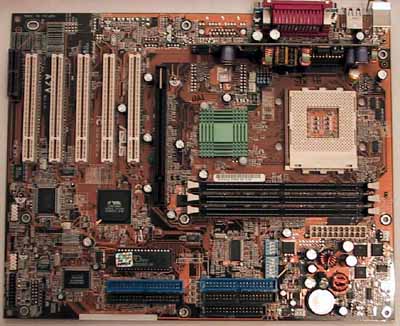Pogo Linux: 1GHz for under $1000
by Anand Lal Shimpi on January 29, 2001 12:00 PM EST- Posted in
- Systems
The Motherboard: "No junk parts"
We admittedly took Pogo cofounder Tim Lee's comment regarding "no junk parts" [in their systems] slightly out of context. What Lee did mean was that their goal was to use the best components when it came down to things like motherboards and add-in cards. In order to reach the $299 price point of the original Pogo systems they had to make a performance sacrifice (Cyrix M2 and S3 Virge graphics), but they didn't make a quality sacrifice.
This is the exact opposite of what you're used to seeing from some of the smaller system integrators. The common situation is that a system from a smaller manufacturer boasts components such as a "High Performance Mainboard" and a "Fast AGP Graphics card." In the case of a Pogo built system, they generally pick components that most of us would be very comfortable with.
The Pogo Altura we received featured an ASUS A7V motherboard. As you will remember from our review of the board, the A7V is a VIA KT133 based Socket-A solution with 5 PCI slots, 1 AGP slot and 1 AMR slot. The board uses the VIA 686A South Bridge giving it two Ultra ATA/66 IDE channels, but in order to claim ATA/100 support, ASUS outfitted the A7V with a second IDE controller. The on-board Promise 20265 Ultra ATA/100 controller does not support IDE RAID, which somewhat diminishes the usefulness of such a controller since no single IDE drive comes close to maxing out the Ultra ATA/66 specification.
The current Altura line lists the motherboard used as the ASUS A7Pro instead of the A7V that was featured in our review sample. The difference between the two is simple - the A7Pro simply lacks the Promise ATA/100 controller which, because of its lack of RAID support, is pretty useless with today's hard drives. We would have actually preferred to see the A7Pro used in our review sample as it could trim the cost of the already affordable $999 system down a little more. Luckily, the A7Pro is used as the base motherboard in all Altura machines that you would buy today.
Looking towards the future, we would like to see Pogo implement a KT133A based motherboard design, which shouldn't add much to the final price tag of the system.











0 Comments
View All Comments